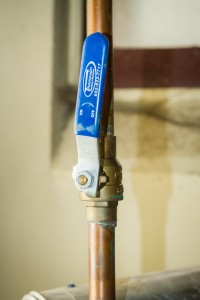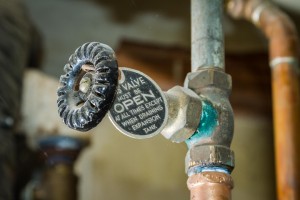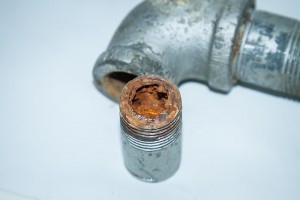Low water pressure can be annoying. It may make certain activities frustrating, like washing hands in the bathroom sink. Below you will find 4 main causes of low water pressure and solutions to each one of them.
Debris or mineral buildup
Debris in the water line is more common that you think. In Minneapolis, the water mains are getting pretty old now, and there may be some breaks in the line that can let in sand or other debris. These are frequently caught in the aerator on the each sink and the aerator may get clogged. It is very simple to take off most aerators and rinse them off. Or if there is a whole house filter, it may be time to change that filter. Clogged filters can restrict water flow.
Shutoff valves
Shutoff valves can be a source of blockage. Sometimes people may have shutoff valves turned down for a purpose, while other times shutoff valves are just getting corroded. At my house, I reduce the flow of the kids’ bathroom sink so that they don’t run the water full blast. You can try opening the shutoff valve fully. Changing the position of shutoff valves though can help them start dripping. This usually happens to gate valves, the ones with the round knob or oval knob. I usually replace these with full-port valves, also called ball valves which allow more water to pass through them unrestricted. The full port valve usually has a handle on it and allows more water to go through it since it uses a ball that is larger than the diameter of the pipe. The opening in this type of valve is the same size as the pipe itself, hence why it lets more water through.
Low water pressure from the city.
Low water pressure from the city is difficult to fix. If the city has a leak in the water main somewhere leading toward your house, you may experience lower water pressure than most other homes. Usually homeowners are responsible for the pipe from the city water main to the house. If the leak is in this pipe, then you’ll have to pay to fix it. Othertimes, a house may be just so far away from the pumping station or water tower that there just isn’t enough pressure. In these cases, the city may install a pump in your house to get the pressure up to a reasonable level, usually around 45psi to 60psi.
Galvanized or steel piping
This is perhaps the most common problem, especially in older homes. Galvanized pipes corrode from the inside, and it is usually the hot water that corrodes first. Many times galvanized pipes can corrode so much that there is barely any space at all for water to flow. In this case, even the smallest of sand particles can clog up the pipes entirely. In this case, the only option is to replace the galvanized pipes with either copper or PEX, or whatever other local materials are approved for waters supply lines.
If you take a look at the example, it is a wonder how any water gets through that pipe. This is from a 1930’s South Minneapolis home and was typical of the hot water pipes. The cold water pipes were much more clear.



